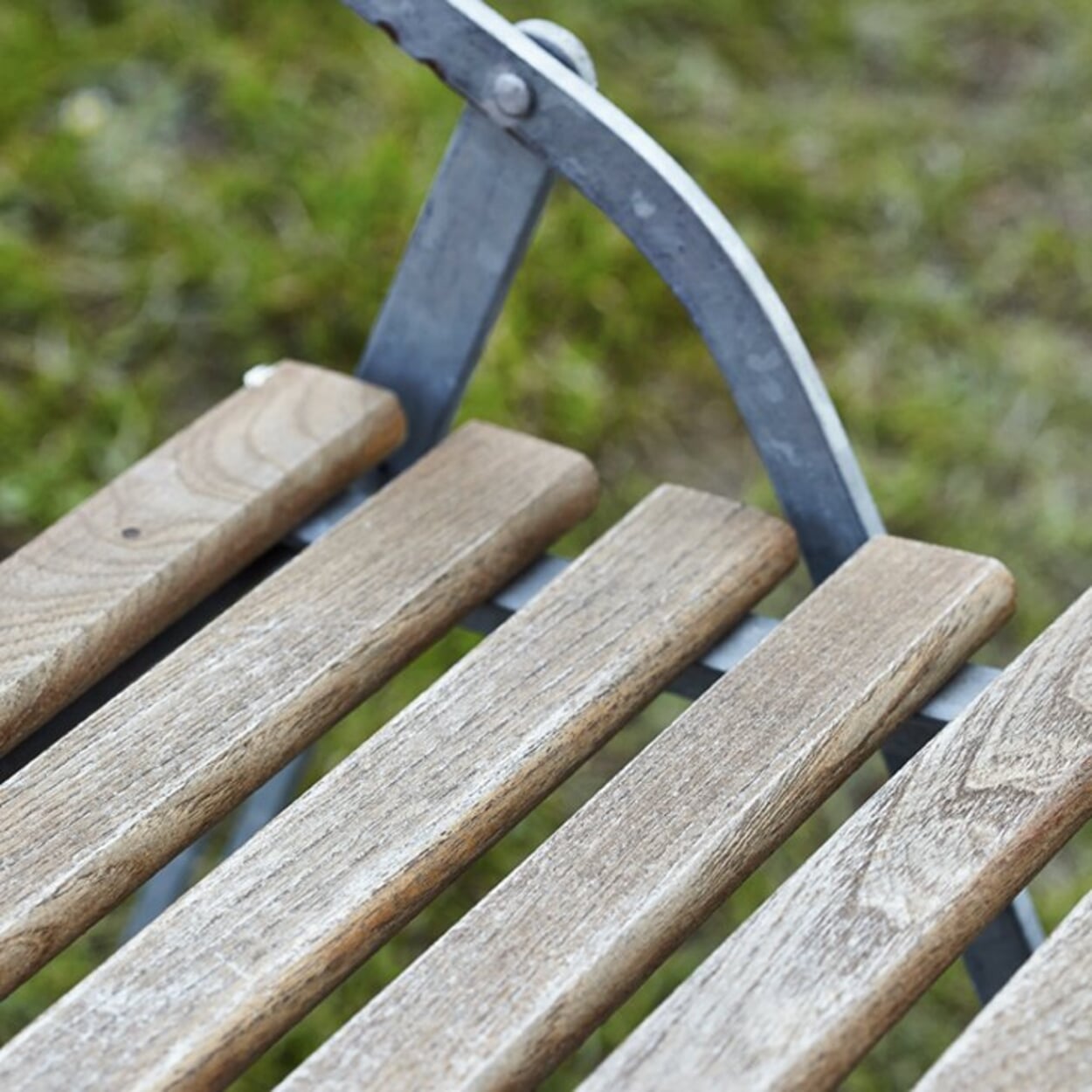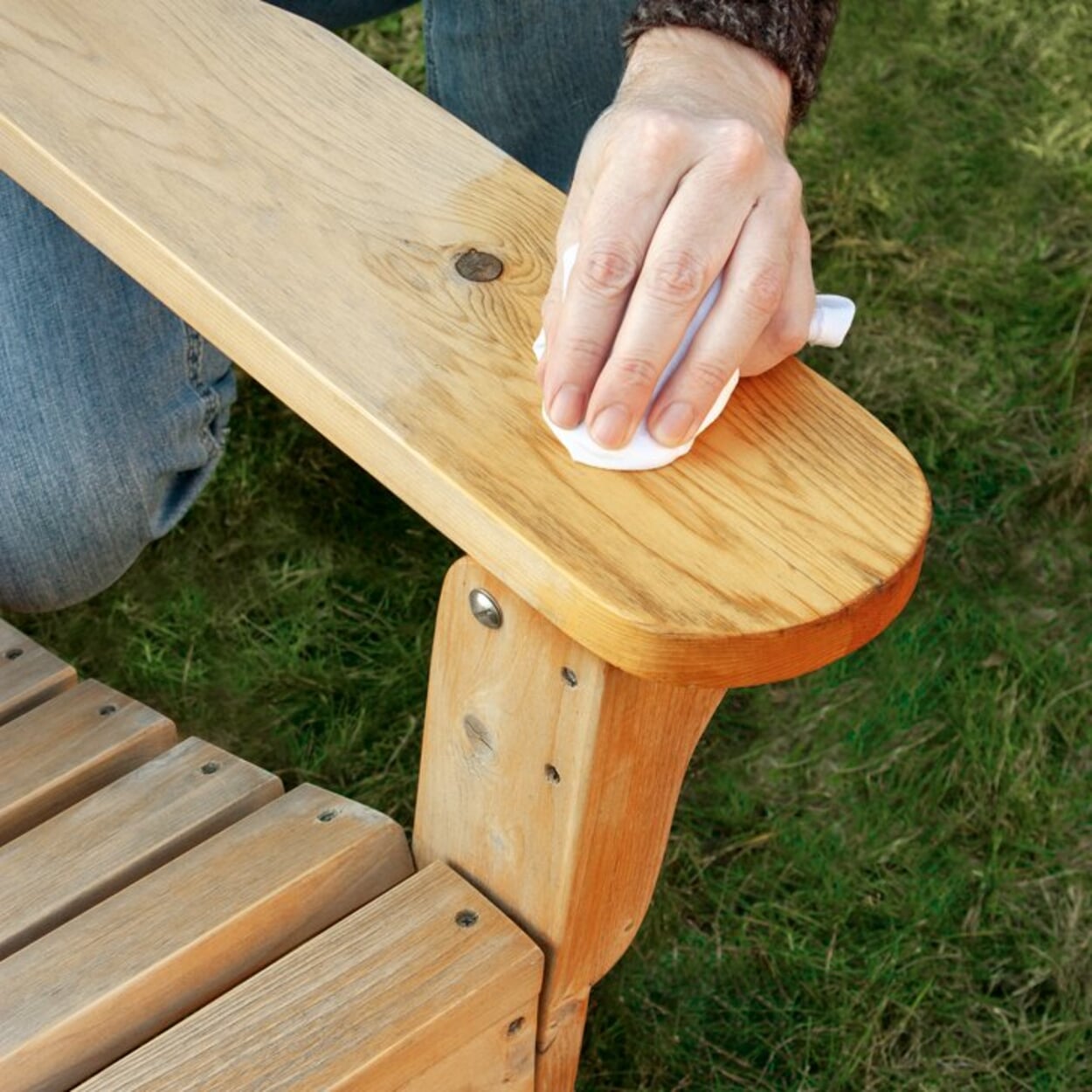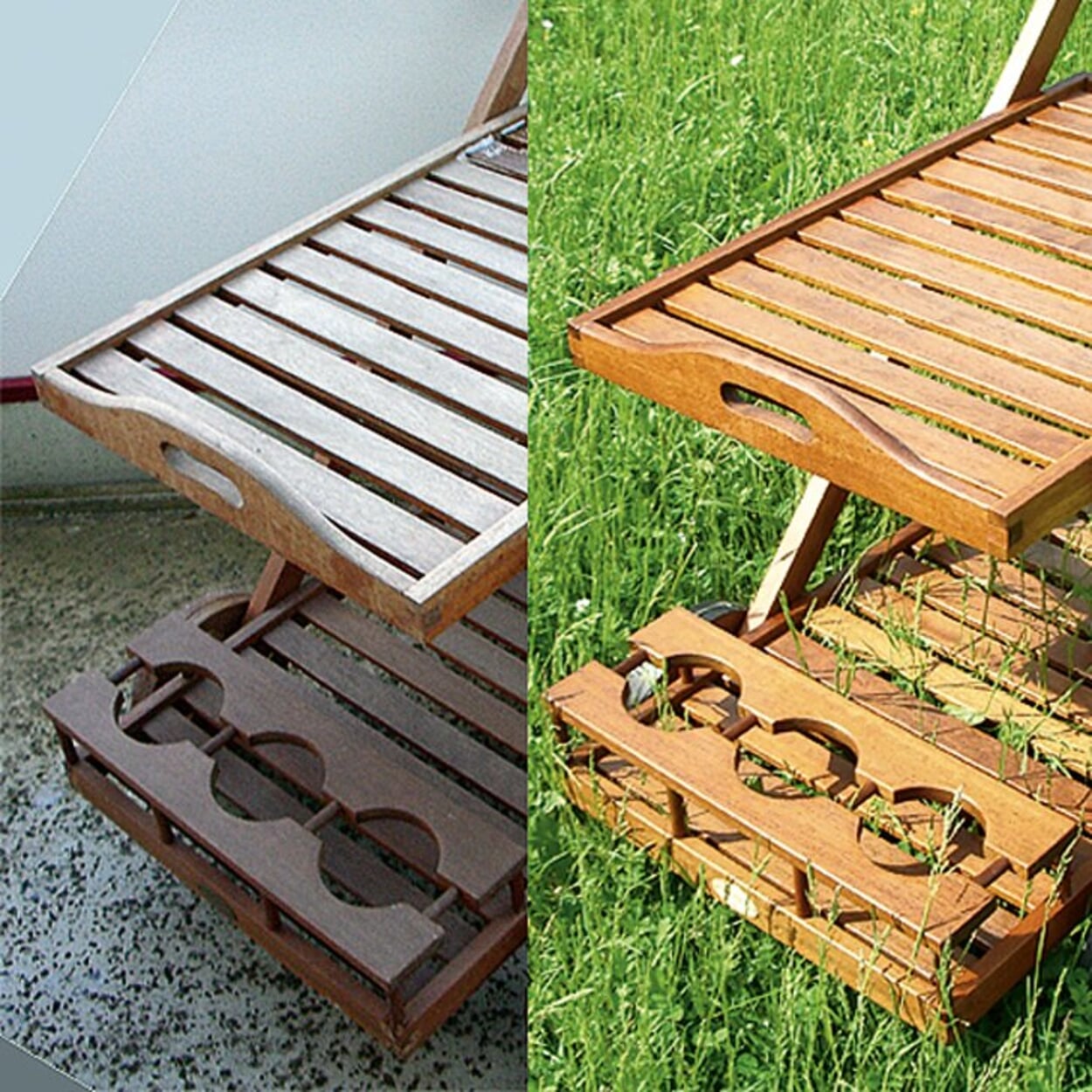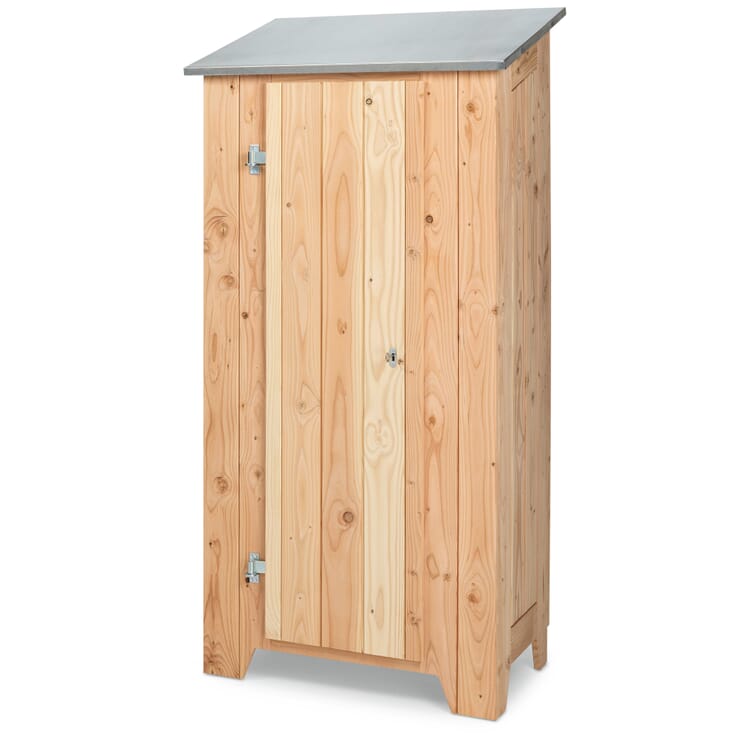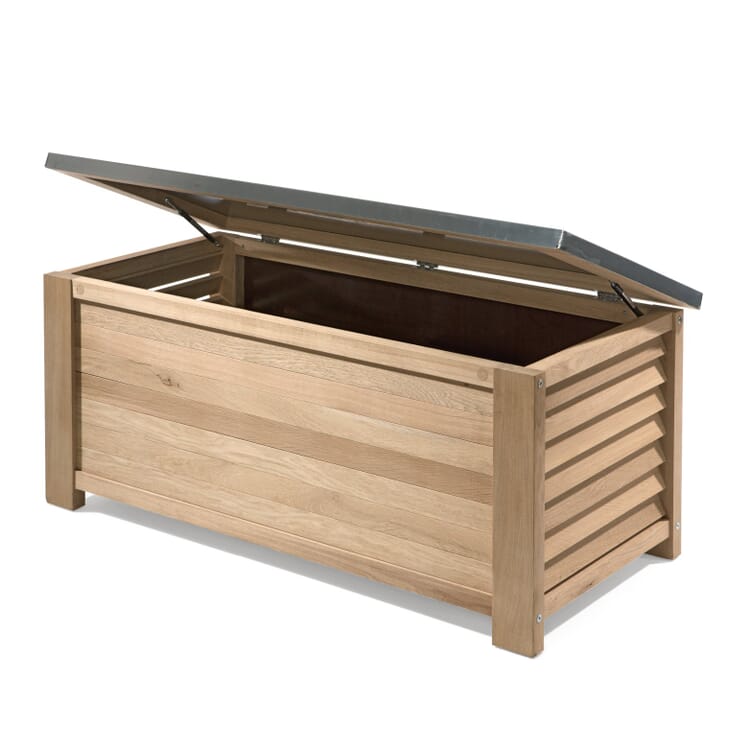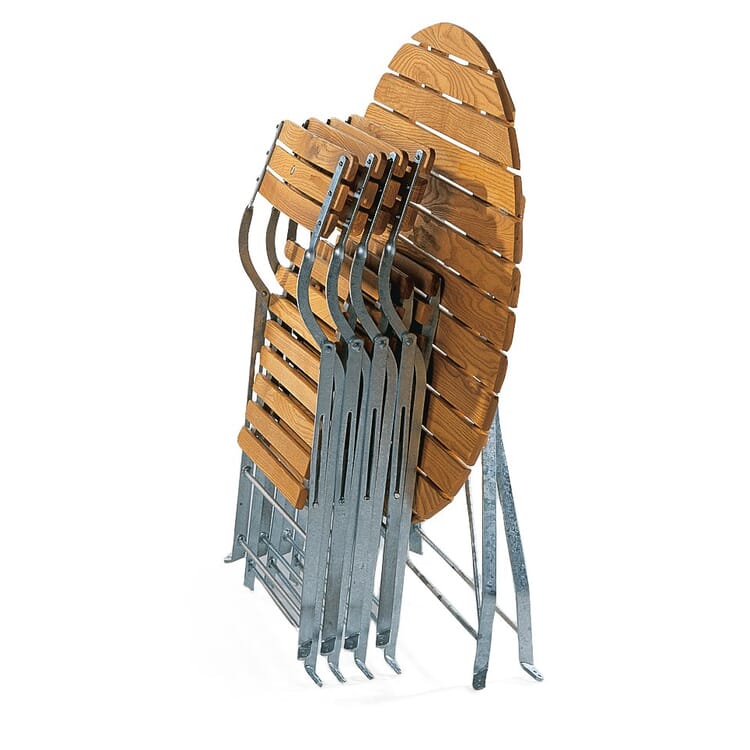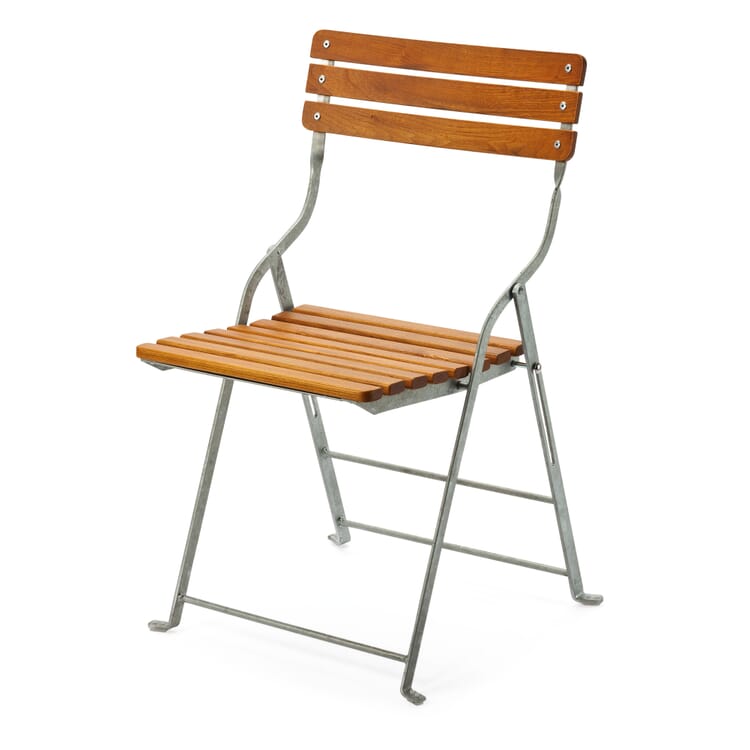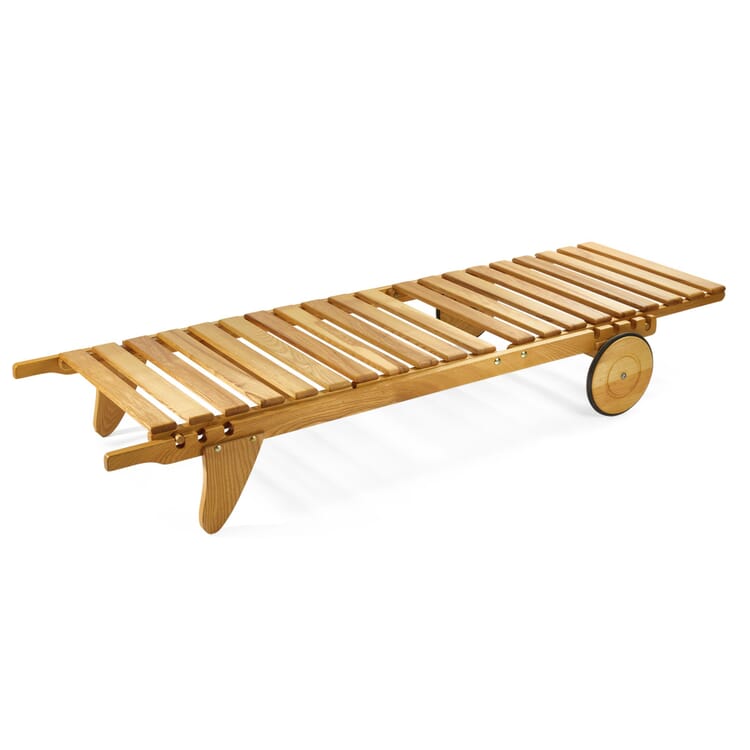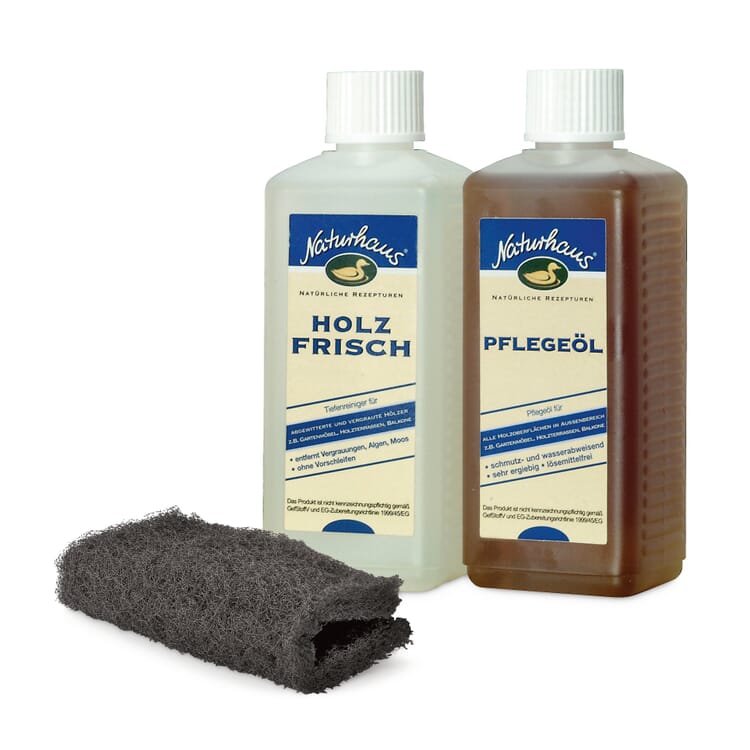Material
Wood surfaces and their care
For our garden furniture we use domestic woods whose properties predestine them for rough outdoor use: Insensitive and defying the climate - like the woods of oak, larch and also silver fir, which are still known from facade, boat and water construction. Also resistant to wood rot is the durable wood of robinia, which is both strong and flexible, and from which, for example, playground equipment for public children's playgrounds is built **Natural, oiled or varnished ** Some of our garden furniture comes with an untreated surface. The wood processed for this furniture, when exposed to the weather, quickly takes on traces of weathering and grays, which gives the character of this furniture. All natural woods can nevertheless be treated with suitable products. Garden furniture, whose appearance or area of use suggests a protective surface finish, can be given a final treatment with suitable products: deep-penetrating, pigmented oil-based impregnations are used, as with the Robinia wood furniture and our deck chairs, as well as opaque, water-based coatings, as with the Danish beech wood furniture. **The right way to handle ** Careful handling can considerably reduce the amount of care required and the risk of permanent damage to garden furniture. Long-term damp environmental conditions (soil moisture from below, continuous rain from above) attack any wood. Therefore, make sure that any moisture that has penetrated the wood is always allowed to evaporate. When it rains, it is advisable to place the furniture underneath or at least lean the chairs against the table or wall so that the water can run off. When not in use for a long time and during the winter season, the garden furniture should be covered with a tarpaulin permeable to air and water vapor, or better kept dry and well ventilated.
Greyed robinia wood seat
Refresh untreated cedar chair with deep cleaner
Before - after
Instructions for the care of untreated wooden furniture
- In the case of untreated furniture made of weather-resistant woods such as oak, larch or robinia treatment of the surface is not necessary. Under the influence of rain and sun, these woods turn gray, but do not suffer any damage as a result. Therefore, the care of such furniture is mainly limited to careful handling and cleaning - Remove heavier dirt with a root brush, thoroughly remove algae and moss infestation with the help of a deep cleaning agent - If grayed wood surfaces need to be lightened, sand with fine sandpaper and/or treat with a deep cleaner.
Garden furniture with untreated surface.
Instructions for the care of surface-treated wooden furniture
- For furniture with oiled or lacquered surfaces remove heavy soiling with a little soapy water (neutral soap) and allow the furniture to dry well afterwards. Never use a high-pressure cleaner! - Surfaces that have been washed out by weathering or attacked by sunlight **refresh at regular intervals **otherwise the wood would turn gray and the surface could get an uneven appearance. Hairline cracks could form in the protective coating, water could penetrate under the paint and cause it to flake off.
Garden furniture surface treated.
- Careful handling can considerably reduce the amount of care required and the risk of permanent damage to garden furniture - Avoid long-term damp conditions (ground moisture from below, continuous rain from above); even the most resistant wood would be attacked by this. Make sure that wooden furniture can always air out well again if it has become damp. - In the event of prolonged rain, place the furniture underneath or at least lean the chairs against the table or wall so that the water can run off. - When not in use for longer periods and during the winter season, cover with a tarpaulin that is permeable to air and water vapor or, better still, store in a dry and well-ventilated place.



